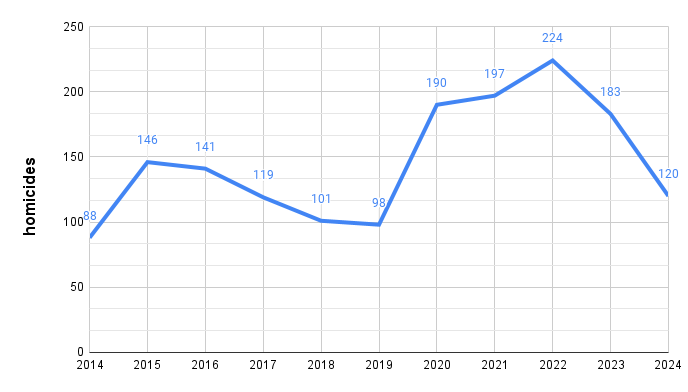An end-around the governor? A recall of state Supreme Court justices? How far will the parties go to defend, or break, Wisconsin’s gerrymandered districts?

By Peter Cameron, THE BADGER PROJECT
The state of Wisconsin is gerrymandered.
In one of the most evenly divided states in the country, none of the 2018 elections for the state’s seven U.S. congressional seats were decided by less than double figures. That’s equivalent to electoral blowouts in every district, no matter which party won.
State Republicans may disagree with the gerrymandering charge, but in the 2018 midterm election, they essentially held their huge majority in the 99-member state Assembly and expanded their smaller majority in the 33-member state Senate, despite losing every statewide race, including the big prizes: governor, U.S. senator and attorney general.
In the Wisconsin State Assembly, the lower house of the state legislature, Democrats won about 53 percent of the total vote, but won only 36 percent of the seats, according to an analysis by the Washington Post.
Many of those Democrat votes and victories came in left-leaning districts in Madison and Milwaukee, where liberals are clustered and Republicans didn’t even bother to run a candidate.
In gerrymandering terms, that’s called packing. When drawing the districts to seek the greatest advantage for your party, you want to pack as many of the opposing side’s voters as possible into a small number of districts. The result in Wisconsin is huge margins of victory for Democrats in many of the districts they win. Democrats do some self-packing, as liberals tend to live in large numbers in geographically smaller urban areas, making gerrymandering them easier.
Some state Republicans attributed their margins to this fact. That has some truth to it, but is nowhere close to the full story.
It’s accurate that in contested Assembly races where both major parties ran a candidate, Republicans won 57 percent of the vote, according to the Washington Post analysis. But Republicans won 83 percent of those seats.
Voters are supposed to choose their politicians, but gerrymandering allows politicians to choose their voters instead. And Republicans aren’t the only party that does it. Democrats have gerryrigged the maps in their favor in states like Illinois and Maryland.

In Wisconsin, liberals complain they have to compete with both arms tied behind their backs. Yet state Democrats “very definitely” had a chance to hand the district-drawing reins to a nonpartisan redistricting commission when they had full control of state government in 2009, said Spencer Black, a longtime Democrat legislator who pushed for the change before he retired in 2010. Instead, they did nothing, “and blew it,” Black said.
Immediately after Democrats passed on depoliticizing the redistricting process, Scott Walker and his fellow Republicans swamped them in the 2010 election and entrenched their party in Wisconsin for at least a decade. And earlier this year, the U.S. Supreme Court overruled a federal court decision. Now federal courts can not interfere in partisan redistricting, the high court ruled. That decision left the current Wisconsin map in place.
WHERE WE’VE BEEN
Wisconsin is of course the home of progressive legend Fightin’ Bob LaFollete, the place where Social Security was born, and the first state to elect an openly gay U.S. senator in Tammy Baldwin. But it is also the place that sent Joseph McCarthy to the U.S. Senate, elected a moderate Republican governor in Tommy Thompson an amazing four times with huge margins of victory, and in recent years became a Republican epicenter. A Speaker of the U.S. House, Paul Ryan; head of the national Republican Party and the president’s chief of staff, Reince Preibus; and a high-profile governor and presidential candidate in Walker all hailed from America’s Dairyland.
Those three have abandoned or been knocked from those lofty perches, but Wisconsin remains the purplest of swing states. Liberals hoping to take back more of it got a bucket of ice water down their pants when they lost a recent seat on the state Supreme Court in what looked like an easy win for the left.
“The public had the ability to flip the legislature if they so desired. And control of the legislature is pretty much the whole ball game.”
former Democratic state Rep. Spencer Black
The path to the presidency will again go through Wisconsin in 2020, but perhaps just as important will be the new maps that must be drawn after the U.S. Census that year. Whoever controls the legislature gets to draw the lines. And with the maps the way they are now, and based on past elections, Democrats have little chance to win back even one of the two houses in the legislature.
For years during his time in the Assembly, Black said he tried to get legislation passed to create a nonpartisan redistricting commission, modeled after the system in Iowa, and take the process away from politicians. In that state, a nonpartisan commission draws the maps, and the legislature gets the right to approve them. If they reject the maps, the commission redraws them.
Both Republicans and Democrats responded to Black’s idea in the same way.
“It went nowhere, to put it mildly,” he said. “Legislators did not want to give up that prerogative.”
When a divided Wisconsin legislature couldn’t agree on maps in 2001, the federal courts stepped in to draw the lines. The resulting maps resulted in both political parties winning and losing control of both legislative houses several times.
“The public had the ability to flip the legislature if they so desired,” Black said. “And control of the legislature is pretty much the whole ball game.”
Since a united Republican government drew the maps in 2011, the party has held the legislature almost completely, save for a few months when the Democrats briefly took back the state Senate after the recall elections of 2012.
Gov. Tony Evers included a proposal that would have created a nonpartisan redistricting agency in his state budget, but Republicans pulled it out. Yet at least three Republican legislators have publicly supported Assembly Bill 303, which would create the agency. And 48 of the 72 counties in Wisconsin have voted for resolutions calling for a nonpartisan process to redistricting.
WHERE WE’RE GOING
In Wisconsin, the governor can veto the maps drawn by the legislature. Evers, a Democrat, will likely do that in 2021.
Republicans can override that veto if they win a super-majority in both houses of the legislature in 2020, said Chad Oldfather, a law professor at Marquette University. That’s an unlikely outcome.
The state GOP may try to avoid the governor’s veto by passing their maps with a legislative maneuver called a joint resolution and get approval from the conservative-controlled state Supreme Court, according to a report by the left-leaning Wisconsin Examiner.
The Republican leaders in the state, Senate Majority Leader Scott Fitzgerald and Assembly Speaker Robin Vos, have publicly denied that report. Fitzgerald said that “has never been discussed by Republican leadership,” while Vos’s spokeswoman called it “fake news.”
In 2017, at a cocktail party of state legislative leaders, Vos reportedly cursed at former Ohio Gov. John Kasich, a prominent Republican and former presidential candidate who supported the failed challenge in the U.S. Supreme Court to the Republican-drawn maps in Wisconsin. Vos also reportedly accused Kasich of betraying his party. In a follow-up report, Vos confirmed the confrontation, but quibbled with the details.
Should Republicans succeed in stiff-arming the governor and getting approval for their maps from the right-leaning state Supreme Court, Black said that would leave no choice but to attempt a recall of the conservative justices.
“That would be a statewide election, and it can’t be gerrymandered,” he wrote in a column for The Cap Times, threatening the recall.
State Supreme Court justices have fairly safe seats, only required to run for reelection every ten years.
To recall a state Supreme Court justice, proponents would have to gather signatures of Wisconsin residents amounting to 25 percent of the nearly 2.7 million votes cast in the race for governor in 2018. That’s a hefty 668,000 signatures needed.
But Democrats and their allies gathered nearly 2 million signatures in triggering a recall election of then-Gov. Walker in 2012.
The Badger Project is a nonpartisan, citizen-supported journalism nonprofit in Wisconsin.
Categories: News Blog




